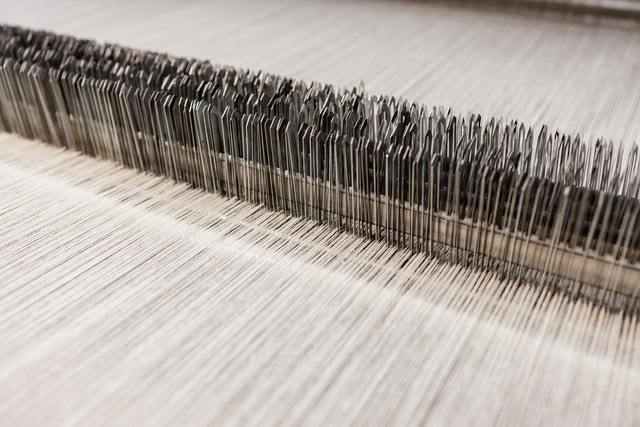
Understanding Weaving Types
The weave of a fabric determines not just its appearance but also its strength, texture, thickness, and cost. Many buyers focus only on GSM or material, but weave is the real structure behind every fabric. Below are the most common types of weaves used in towels, bedding, canvas, and other textiles.
1. Plain Weave
The most basic and durable weave. Threads are interlaced alternately over and under — creating a tight, strong, and balanced surface. Used in basic sheeting, percale bedding, canvas, and industrial fabrics.
2. Twill Weave
Recognizable by diagonal lines or ridges. It’s more flexible and drapes better than plain weave. Often used in denim, workwear, and high-end hotel bedding for a smoother feel.
3. Satin Weave
Yarns float over several weft threads, creating a smooth, glossy surface. Luxurious feel but lower durability than twill or plain. Popular in sateen bed sheets and elegant garments.
4. Jacquard Weave
Complex patterns woven into the fabric using specialized looms. Often used in high-end bedding, hotel towels with logos, or decorative fabrics. Adds style and branding power.
5. Dobby Weave
A patterned weave that creates small geometric designs or textured effects (e.g., diamond or honeycomb). Common in dobby border towels, bathrobes, and decorative textiles.
6. Herringbone / Zigzag
A variation of the twill weave with alternating diagonal lines forming a zigzag. Elegant and often used in high-end linen or winter fabrics. Strong with a unique appearance.
7. Terry Weave (Looped Pile)
Specifically for towels. Terry weave uses ground warp and pile warp — creating uncut loops on both sides. Offers excellent absorbency. Can be single-loop, double-loop, or zero-twist depending on softness and purpose.
8. Waffle Weave
Also called honeycomb weave. A textured, grid-like surface with high surface area. Lightweight, quick-drying, and breathable — often used in spa towels, bathrobes, and summer throws.
9. Non-Woven / Bonded
Not technically woven — these fabrics are made by bonding or felting fibers together. Common in disposable medical sheets, filters, and non-woven pillowcases. No yarn structure or weave count.
How We Help
Choosing the right weave is critical for product success. We guide our clients based on use case, cost target, and expected performance. Whether you’re building a hotel brand or a retail line, we’ll help you select the best weave — and can even provide physical weave samples on request.
For more related products and services, explore the pages below: